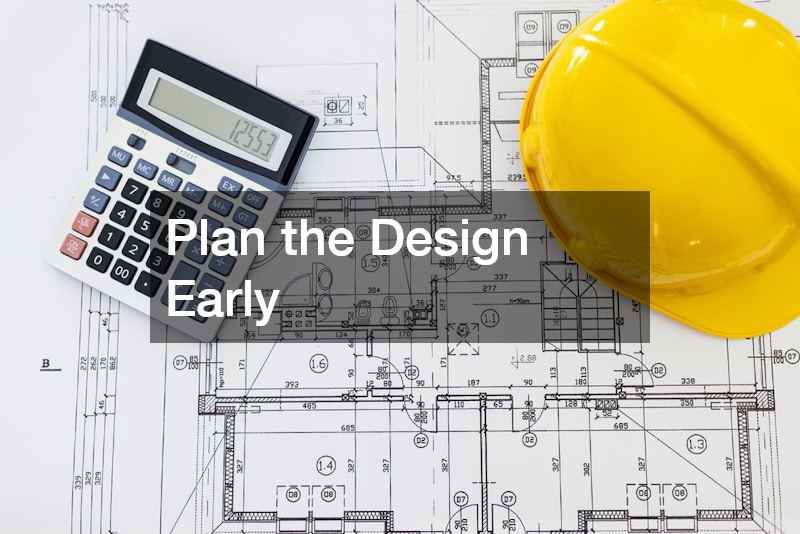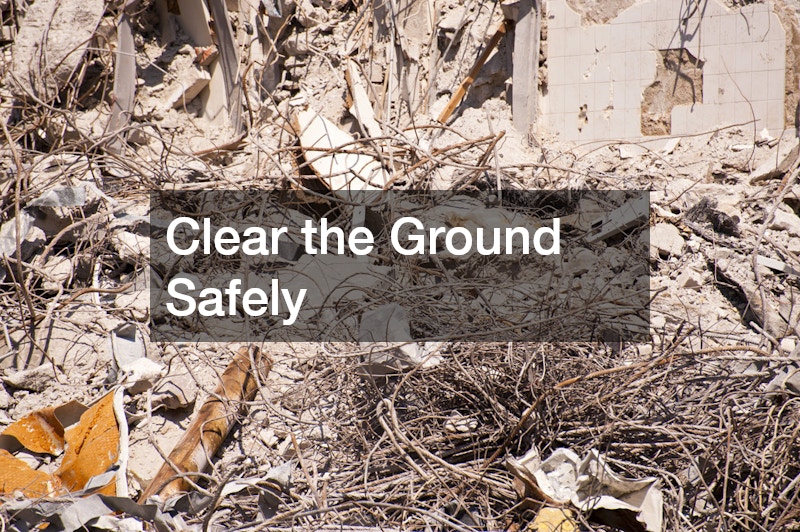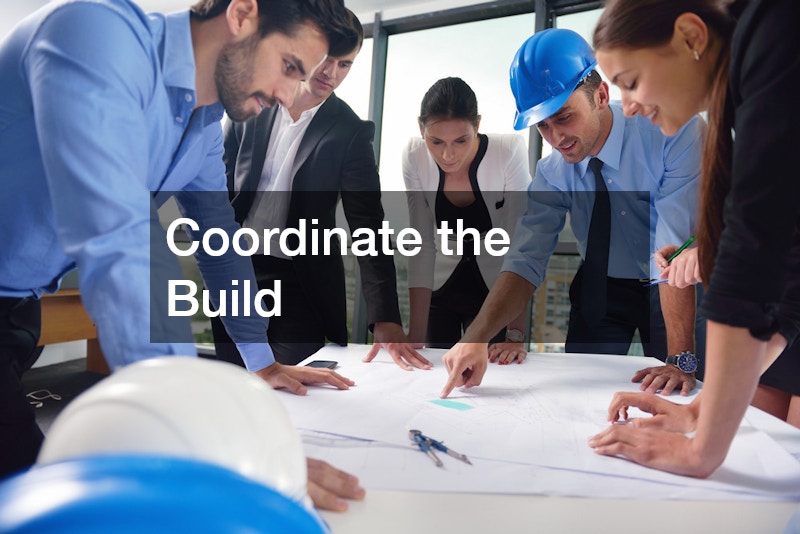When it comes to building an industrial building, the process is one of the most complex undertakings in construction. It requires more than just breaking ground and raising walls; it demands careful coordination of resources, expertise, and long-term planning. Every choice you make—whether it’s the location, the team you hire, or the approvals you secure—has an impact on the cost, efficiency, and overall functionality of the final structure. For that reason, following a clear roadmap ensures nothing is left to chance. Your time and money are too valuable not to have a clearly drawn-out plan.
This type of project involves multiple stages, each with its own challenges and considerations. From envisioning the purpose of the facility to securing the right site and preparing the ground, every step plays a role in shaping a safe, reliable, and durable structure. Overlooking even a minor detail can lead to expensive setbacks later. That’s why approaching the process systematically makes all the difference in achieving a successful outcome.
The following ten steps are designed to walk you through the most important milestones, from concept to completion. They cover everything from planning and approvals to ground preparation, coordination of the build, and final inspections. Along the way, you’ll see how selecting the right professionals, staying on budget, and addressing infrastructure needs will help you avoid common pitfalls. Whether this is your first experience with large-scale construction or you’ve been through the process before, this guide will provide clarity and confidence. By understanding how each step connects to the next, you’ll be able to anticipate challenges and prepare solutions in advance. These ten crucial steps will help you bring your vision to life while ensuring your industrial project stands the test of time.
1. Define Your Vision

The first step in any major project is to clearly outline the vision for what you want to achieve. Without a well-thought-out plan, you risk confusion, changes midstream, and escalating costs. Defining your vision means asking important questions: What operations will take place inside? What design will support those operations best? And what is the scale of your long-term goals? Establishing clarity at this stage ensures the rest of the process is guided by a consistent framework.
One of the best ways to refine your vision is by studying examples. Searching through industrial properties for sale near me can help you evaluate what types of facilities exist, how they are laid out, and what features might be necessary for your own plans. These comparisons give you a sense of practicality and scale, providing valuable insights before you begin the design process.
Communicating this vision effectively is equally important. Everyone involved in building an industrial building—from contractors to engineers—must understand your expectations. A shared vision keeps the project aligned and minimizes miscommunication. When the foundation of your project starts with clarity, the path forward becomes much smoother and more efficient.
2. Secure the Right Site
Selecting the right location sets the stage for everything else. A site that doesn’t meet your operational needs can lead to ongoing limitations and higher costs over time. Factors like zoning laws, access to utilities, and transportation routes all influence whether a location will work for your project. Choosing carefully ensures that your facility can grow and adapt as your operations evolve.
Exploring available industrial property options helps you identify lots that align with your goals. The right location should provide adequate space, be positioned near key transport networks, and meet regulatory requirements. Making these considerations early avoids delays later when construction is underway.
The location also directly affects how well your team can execute the project. Site conditions determine what preparation is needed, while surrounding infrastructure impacts utility connections and accessibility. By securing a strong site from the beginning, you lay a solid foundation for building an industrial building that will serve your needs for decades.
3. Plan the Design Early

Once the site is chosen, it’s time to develop the design. This step shapes not only the building’s appearance but also its function, efficiency, and safety. A thoughtful design balances cost with usability while ensuring compliance with industry standards. Starting the design process early allows for adjustments before construction begins, saving time and money.
At this stage, professional input is invaluable. Partnering with a team that provides industrial construction services ensures that the design is both practical and achievable. These specialists understand the complexities of large-scale facilities and can help you avoid design flaws that may become costly to fix later.
Early planning also means considering future growth. A design that allows for expansion or new technology integration keeps your facility relevant and functional over time. Incorporating these elements from the beginning ensures that building an industrial building is not just about today’s needs, but tomorrow’s opportunities as well.
4. Handle Legal Approvals
Before ground is broken, it’s essential to secure all required approvals and permits. Legal compliance ensures that your project won’t face unnecessary delays or fines. These approvals may include zoning clearances, building permits, and environmental regulations, each of which protects both the project and the surrounding community.
The expertise of professionals trained in civil engineering can be especially useful at this stage. They not only understand how to design within code but also how to present plans to regulatory boards. Their input ensures that the project meets safety standards and passes required inspections.
Legal steps are often time-consuming, but they cannot be rushed or skipped. Addressing them thoroughly upfront keeps the process on schedule and avoids issues down the road. In the larger picture of building an industrial building, handling approvals early provides the assurance that the project rests on a strong legal foundation.
5. Clear the Ground Safely

After approvals are complete, preparing the site becomes the next critical step. This often begins with clearing existing structures or debris to create a safe workspace. Removing obstacles ensures that construction crews can operate efficiently and that the project won’t be hindered by leftover hazards.
Hiring a qualified demolition service can make this process far more effective. These professionals bring the tools, safety procedures, and experience needed to clear land properly. Their work sets the stage for excavation, foundation work, and every step that follows.
The quality of this stage cannot be overlooked. A poorly cleared site can lead to safety risks, unstable foundations, and future complications. By taking the time to clear the land thoroughly and responsibly, you give your team the best possible start to building an industrial building.
6. Prepare the Foundation
A strong foundation is essential for any lasting structure. This stage is about more than just concrete; it’s about ensuring the ground is stable and capable of supporting the weight and function of the facility for decades to come. The foundation directly impacts durability, safety, and the overall efficiency of the project.
Working with a professional excavation company ensures the site is properly leveled and prepared. These experts manage soil testing, grading, and drainage so the ground is suitable for construction. Their work prevents problems like shifting, cracking, or uneven settling later on.
The importance of this stage extends beyond immediate stability. A properly prepared foundation minimizes long-term maintenance issues and ensures every aspect of the structure remains sound. For anyone focused on building an industrial building, laying this groundwork is a step that cannot be overlooked.
7. Coordinate the Build

When the foundation is ready, the main structure begins to take shape. This stage involves coordinating multiple teams to ensure each component is installed correctly and on time. Without strong coordination, projects risk falling behind schedule or facing costly mistakes.
Hiring an experienced building contractor gives you the leadership needed to manage crews, materials, and deadlines. This role ensures that every trade involved—whether it’s electrical, plumbing, or steelwork—operates in sync with the others. Their guidance is essential to keeping momentum steady.
This stage is also where communication matters most. Regular updates, clear reporting, and accountability help the project stay aligned with the original plan. Smooth coordination creates a more predictable path to completion and ensures building an industrial building remains on track.
8. Manage the Budget
Finances are often one of the biggest stress points in large-scale construction. Careful budgeting ensures that costs stay within expectations and resources are used efficiently. Without ongoing financial oversight, even well-planned projects can quickly spiral out of control.
Partnering with a team that offers construction management services helps bring clarity to this process. These professionals monitor spending, forecast costs, and identify potential savings, ensuring that every dollar is accounted for. Their involvement helps protect the project’s financial health.
Managing money isn’t just about cutting costs—it’s about maximizing value. Tracking expenses closely while still investing in quality materials and skilled labor ensures a balance between cost and long-term results. In the context of building an industrial building, financial discipline provides the stability needed for success.
9. Focus on Infrastructure
Beyond walls and roofing, infrastructure is what allows a facility to operate effectively. This includes everything from access roads and parking areas to utility connections and internal systems. Ignoring these elements can leave an otherwise solid building underprepared for day-to-day use.
One key consideration at this stage is commercial asphalt paving. Properly designed and installed pavement ensures that trucks, employees, and visitors have safe, reliable access to the facility. It also contributes to overall efficiency, as smooth logistics save time and prevent unnecessary wear on vehicles.
Thinking ahead about infrastructure ensures that the building functions as intended from the first day of operation. By addressing these details during construction, you guarantee that building an industrial building supports both current needs and long-term growth.
10. Finalize and Inspect
The last stage is about making sure every piece of the project meets expectations. Inspections confirm that safety standards, design requirements, and operational needs are all satisfied before you put the facility to use. Skipping or rushing this step risks problems appearing later when they are far more costly to fix.
Bringing in a commercial contractor to review final details can provide a valuable second perspective. These professionals check for overlooked issues, ensure work meets codes, and confirm that systems are functioning correctly. Their input adds an extra layer of assurance before handover.
Final inspections also provide peace of mind to owners and stakeholders. The transition into operations is smoother when you know that you and your team of professionals have reviewed and approved everything. With this step complete, building an industrial building reaches its conclusion, ready to serve its purpose for years to come.
Building an industrial building is a significant undertaking, and approaching it with a clear plan helps ensure success from start to finish. Each of the ten steps outlined here plays an essential role in guiding the project forward, from creating a vision and securing the right site to preparing the ground, coordinating construction, and completing final inspections. Skipping even one stage can lead to costly errors, but by following them in order, you create a process that flows smoothly and produces a reliable, functional facility.
These steps also highlight the importance of working with qualified professionals. From demolition to excavation, design to budgeting, every expert involved contributes to the quality and safety of the final structure. Their combined knowledge not only saves time and money but also minimizes risks that could otherwise cause delays or future problems. Choosing the right teams ensures that your investment delivers long-term value and durability.
Just as important is the focus on details that extend beyond the structure itself. Infrastructure, legal approvals, and budgeting are often the areas where projects stumble, but addressing them carefully means you avoid unnecessary setbacks. By committing to these areas early, you set yourself up for smooth operations once the building is complete.
Each step builds on the last, leaving nothing to chance. By following this distinct roadmap, you not only achieve a structure that meets your immediate needs but also one that supports your growth for years to come. Careful planning, professional support, and systematic action are the keys to completing a project that stands strong in both function and value.
